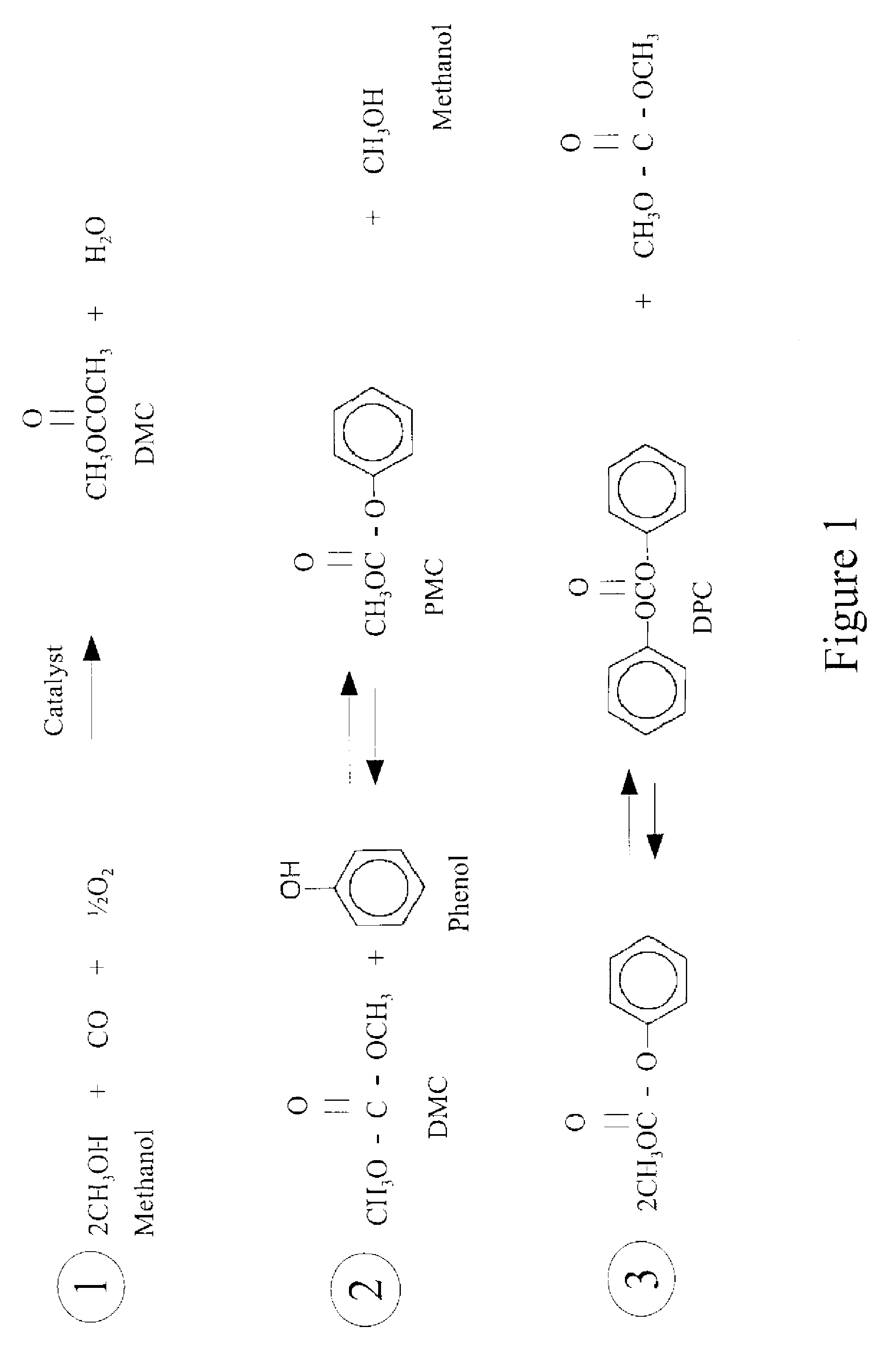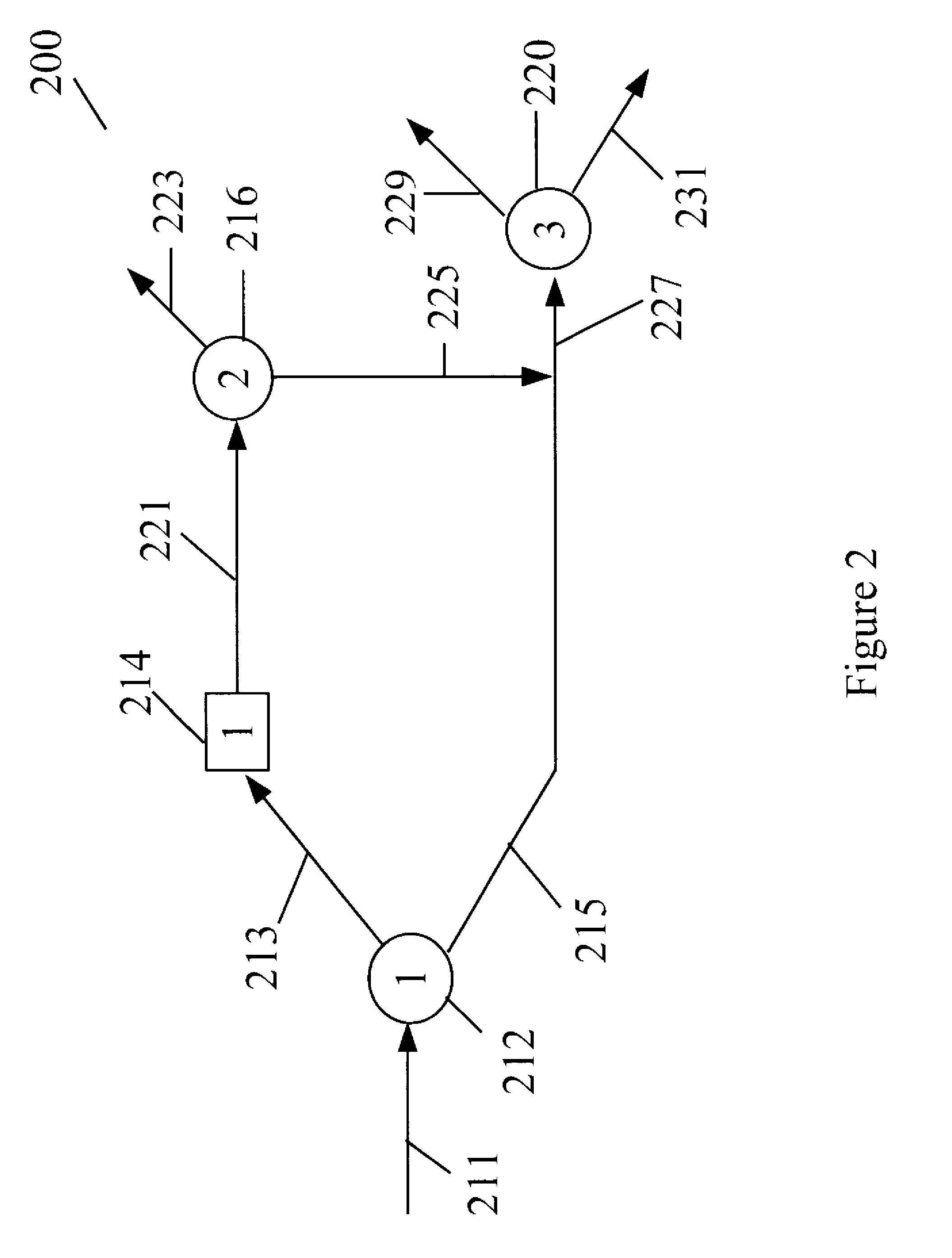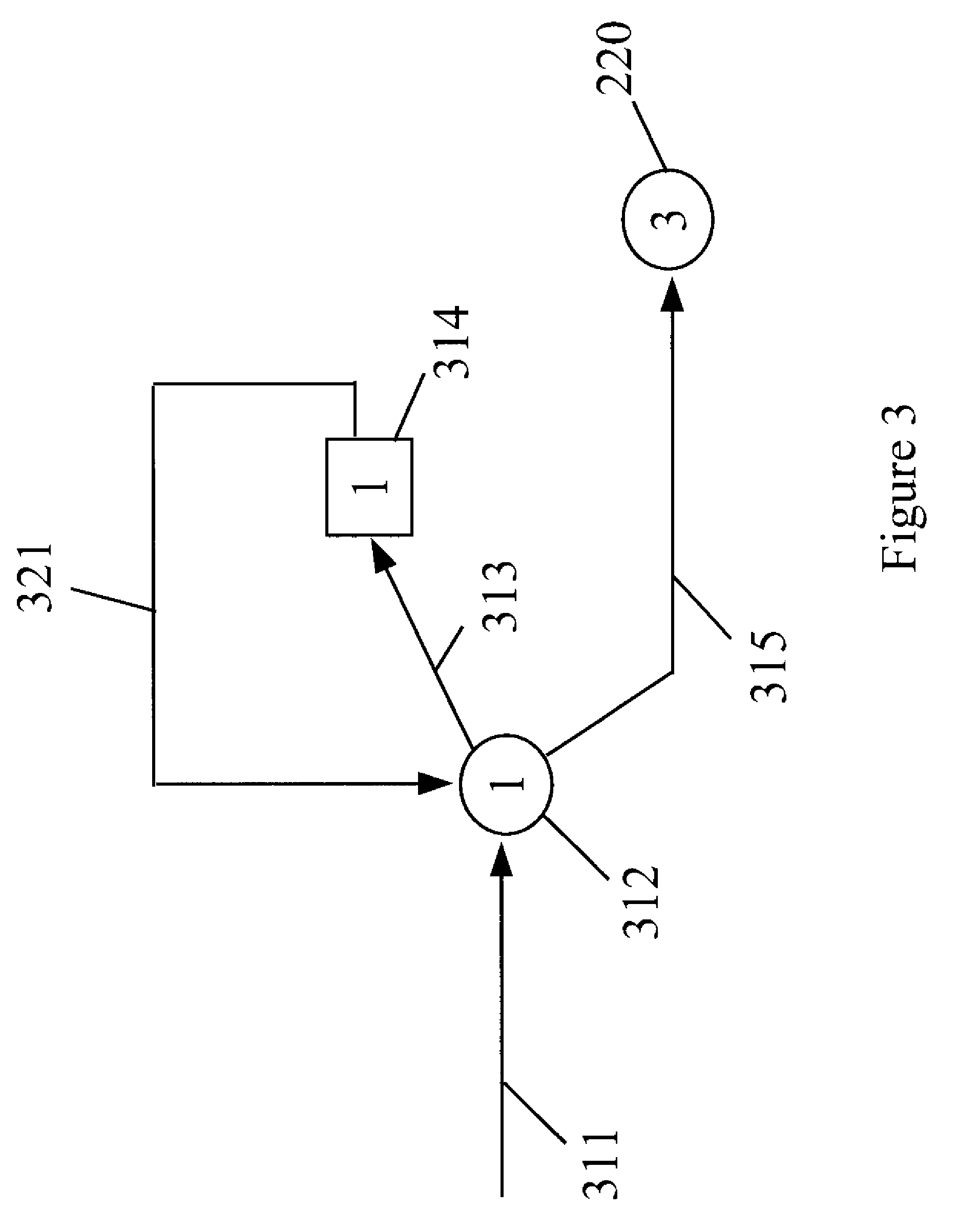Process for manufacturing dimethyl carbonate
a technology of dimethyl carbonate and dimethyl carbonate, which is applied in the field of process for manufacturing dimethyl carbonate, can solve the problems of difficult to achieve cost-efficient recycling of byproduct stream, inconsistency of chemical and chemical concentration in byproduct line, and non-phosgene process
- Summary
- Abstract
- Description
- Claims
- Application Information
AI Technical Summary
Benefits of technology
Problems solved by technology
Method used
Image
Examples
examples
[0079]Having described the invention in detail, the following examples are provided. The examples should not be considered as limiting the scope of the invention, but merely as illustrative and representative thereof.
Illustration 1:
[0080]A computer simulation using Aspen Simulation software was run to determine the product stream component concentration on streams from an azeotrope distillation column having 60 theoretical trays. Six runs were performed using six different feed stream compositions from a proposed diaryl carbonate production facility. These feed stream configurations are indicated in Table 1. The azeotrope distillation column was set to run throughout the six runs according to the following additional parameters:[0081]Top Product Stream: 28 wt % (maximum) dimethyl carbonate (DMC) and 1 ppm (maximum) aromatic alcohol.[0082]Top Condenser Reflux Ratio (L / D): 1.35.[0083]First feed stream: 53,956 Kg / hr (50.96 wt % MeOH, 41.40 wt % DMC, 3.78 wt % water, the balance include...
experiment 1
[0090]A mixture comprising 16.5 ml water, 83.5 ml DMC, and 0.015 ml methanol was prepared and introduced to a flask at 60° C. Also introduced to the flask was 1 gr of phenol and 1 gr of anisole. The flask was sealed and the mixture was stirred for five minutes and cooled to room temperature. The mixture separated into two phases (aqueous and organic) and component concentrations of each phase was analyzed by gas chromatography (GC) and are reported in Tables 3 and 4.
experiment 2
[0091]A mixture comprising 16.5 ml water, 83.5 ml DMC, 0.015 ml methanol was prepared and introduced to a flask at 60° C. Also introduced to the flask was 5 gr of phenol and 5 gr of anisole. The flask was sealed and the mixture was stirred for five minutes and cooled to room temperature. The mixture separated into two phases (aqueous and organic) and component concentrations of each phase was analyzed by GC and are reported in Tables 3 and 4.
[0092]Experiments 1 and 2 demonstrate that anisole and phenol impurities remain largely in the organic phase while only small amounts are contained in the aqueous phase. Furthermore, the presence of anisole and / or phenol up to 5 wt % in the bottom stream from azeotrope column in a DMC plant will not impair water separation in the decanter / water separator downstream therefrom.
[0093]
TABLE 3Organic Phase(% weight on water free basis)MethanolDMCAnisolePhenolExperiment 10.0197.591.291.11Experiment 20.0188.236.095.67
[0094]
TABLE 4Aqueous Phase(% weight...
PUM
| Property | Measurement | Unit |
|---|---|---|
| pressure | aaaaa | aaaaa |
| pressure | aaaaa | aaaaa |
| temperature | aaaaa | aaaaa |
Abstract
Description
Claims
Application Information
 Login to View More
Login to View More - R&D
- Intellectual Property
- Life Sciences
- Materials
- Tech Scout
- Unparalleled Data Quality
- Higher Quality Content
- 60% Fewer Hallucinations
Browse by: Latest US Patents, China's latest patents, Technical Efficacy Thesaurus, Application Domain, Technology Topic, Popular Technical Reports.
© 2025 PatSnap. All rights reserved.Legal|Privacy policy|Modern Slavery Act Transparency Statement|Sitemap|About US| Contact US: help@patsnap.com



